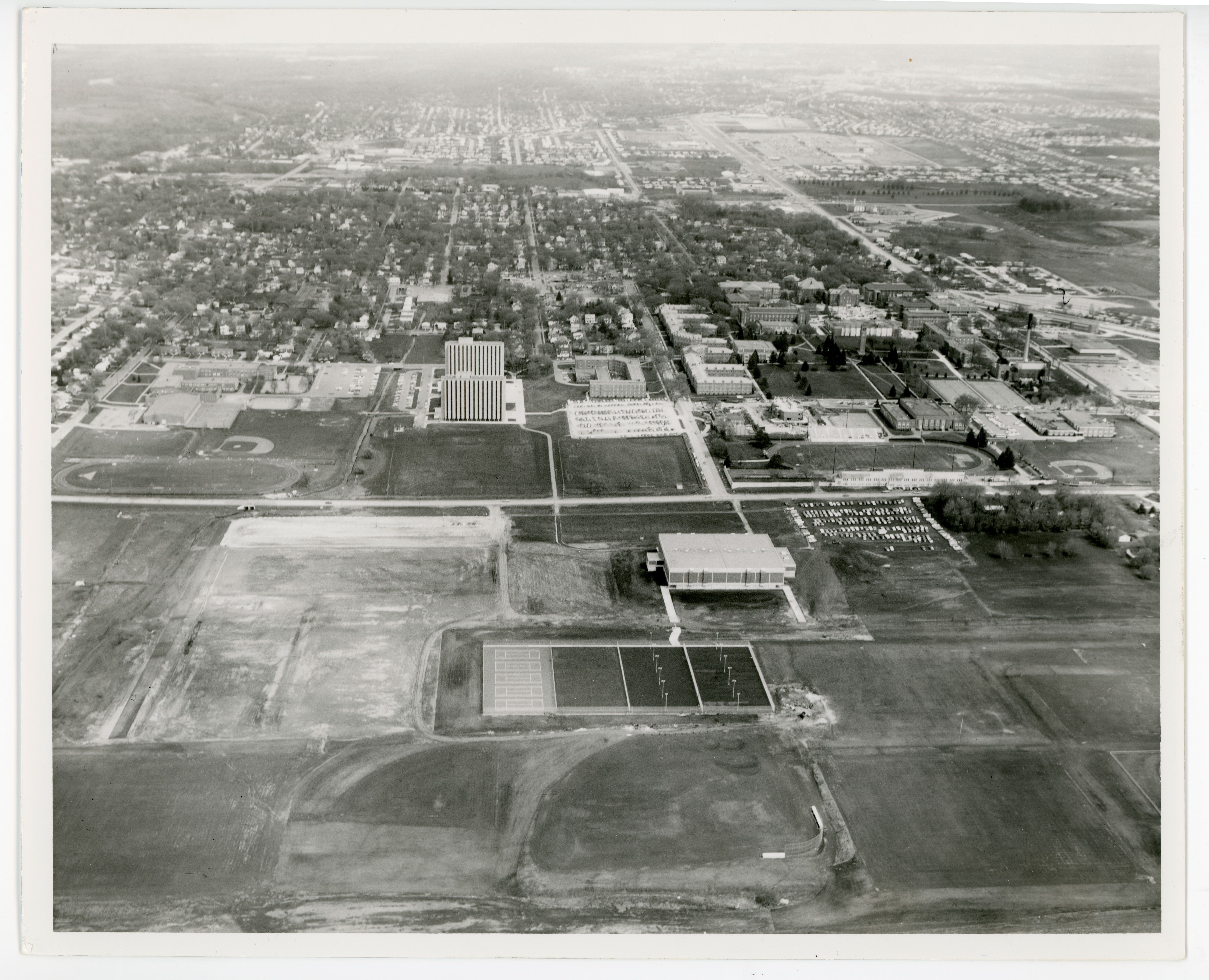In August 1966, the Board of Regents approved a $1.35 million general plan for what was considered to be Unit 1 of a physical education complex for the University of Northern Iowa. By August 1967, the budget had risen to $1.4 million, with $1 million to come from state appropriated funds and $400,000 to come from federal grants. In May 1968, the Regents approved a master plan for the complex and authorized UNI to proceed with construction planning for Unit 1, which would eventually become known as the Physical Education Center (PEC). In justifying his request to the Regents, President James W. Maucker said that "the total plan calls for development of comprehensive physical education facilities on a new site west of the highway and a gradual phasing out of the use of the present facilities for physical education." President Maucker also cited the growth of UNI, the changing patterns of land use on the eastern part of campus, and the consequent loss of playing field space east of Hudson Road. He stated, "We feel that this land development is…vital for physical education instruction and for freeing other land for development of instructional buildings in the center campus.”

Architects for the project were Savage and Ver Ploeg of Des Moines. Plans for the building were designed to allow for further development of other physical education facilities in the immediate area west of Hudson Road. Development of the entire complex was seen as a ten-year project costing $7 or $8 million. Unit 1 would include offices, activity rooms, classrooms, and gymnasiums. Steam service would be routed to the new building in a separate $240,500 construction project.
By October 1968, land west of Hudson Road was being graded for the new building and for playing fields for football, baseball, tennis, and softball. Planners hoped that construction would be under way by spring 1969. However, the project remained somewhat doubtful due a lack of legal authority for Iowa to bond for capital improvements at that time. Capital projects needed to be funded with appropriations, and that money was simply not available.
In January 1969, the Regents approved contracts for the new building: John G. Miller of Waterloo was the general contractor. Initial work began in March 1969 but progressed slowly due to heavy summer rains and a lack of appropriate utility connections. Despite the delays, officials still hoped for a fall 1970 completion date; contractors failed to meet that date. Installing a new kind of floor in the building presented one specific problem. UNI architect Robert Porter also cited strikes among workers and in the transportation industry, bad weather, and a labor shortage in the local construction industry. With projects such as College Square Mall under construction at the same time, workers were in short supply in the area.


The Physical Education Center was ready for use in the fall of 1971. Professor William Thrall, head of the Department of Physical Education for Men, was happy with the results, saying,
“This takes the clamps off our instructional, recreational, and intramural programs. We're now able to take care of a larger volume of students, faculty, and staff members, in addition to offering them a wider range of activities and facilities.”
Thrall also cautioned that the new building was only the first phase of the larger physical education complex. He said, "We're really not making the best use of these things yet…We'll have to wait for the second phase before we can fully utilize our present equipment." A second phase in the development of the complex would not be available until 1976, after the long, hard, divisive battle that eventually resulted in the UNI-Dome. The third phase in the development of the complex, and, in all likelihood what Thrall envisioned as the logical second phase, the Wellness/Recreation Center, was not completed until 1997, over twenty-five years after his remarks.


Students liked the new facilities, though there were some complaints about mandatory suit service fees for men. Locker and training facilities underwent renovation and expansion in a $244,000 project in 1978. In the fall of 1979, PEC officials noted that there were fifty-three women's teams, forty co-rec teams, and 121 men's teams involved in intramural athletics.
Conflicts arose in the late 1970s and early 1980s relating to the use of PEC facilities for recreational activities as opposed to intercollegiate athletics activities. William Thrall pointed out that the building was built with money intended for "academic and recreational use…It has no accommodations for spectators and doesn't provide intercollegiate sized courts." Athletics coaches such as volleyball coach Carol Gruber and basketball coach Jim Berry, maintained that sharing courts and facilities was dangerous and did not allow for good coaching. However, this conflict, like most other occasional complaints about hours of service and availability of facilities in the PEC, is more a testament to the popularity of the building than a serious shortcoming. Use of the facilities remained high even after the opening of the Wellness/Recreation Center in 1997.
The PEC is connected to the UNI-Dome by indoor and outdoor walkways. The Wellness/Recreation Center wraps around the north and east sides of the PEC. The construction of the Human Performance Center further altered the surroundings of the PEC and the patterns of use and facilities in the building.
Originally compiled by Library Assistant Susan Witthoft; edited by University Archivist Gerald L. Peterson, July 1996; substantially revised by Gerald L. Peterson, with research assistance by Student Assistant Julie Wiese and scanning by Library Assistant Gail Briddle, January-February 2003; last updated, March 12, 2012 (GP); Photos and captions updated by Graduate Assistant Eliza Mussmann February 8, 2023; content updated by Graduate Intern Marcea Seible, June 2025.
